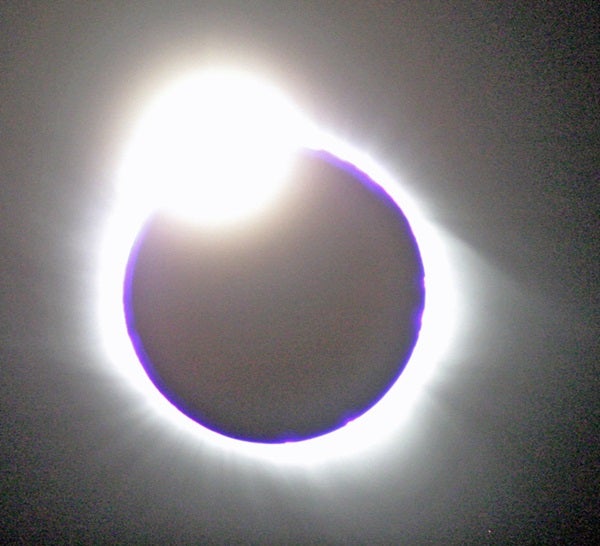Astronomy magazine and Astronomical Tours hosted a group of 50 travelers for Friday’s total solar eclipse. Three hundred shipmates from other tours joined us aboard the M/S Paul Gauguin, captained by Gilles Boussard.
Meteorite specialist Mike Reynolds and I led the group. We were both gratified by how well our pre-eclipse talks had been received.
At the last moment, the Sun emerged from the clouds and the diamond ring appeared just before totality began. Through binoculars, red prominences and the silvery corona left viewers awestruck. Venus appeared as a brilliant starlike object 2 degrees east (right) of the Sun. We saw no other planets or stars.
“Give Captain Boussard lots of credit,” said Reynolds, “He was totally flexible and a joy to work with. I’ve seen three eclipses aboard ship, and this was in many ways the most dramatic.”
Everyone aboard cheered loudly in unison when the ship’s horn blared at totality’s end. Among happiness, amazement, and relief, one thought predominated: Let’s get ready for the next total eclipse March 29, 2006!










